This post may contain affiliate links. Please read my disclosure and privacy policy.
This recipe should come in handy this holiday season. Or, really anytime you want to make something totally decadent.
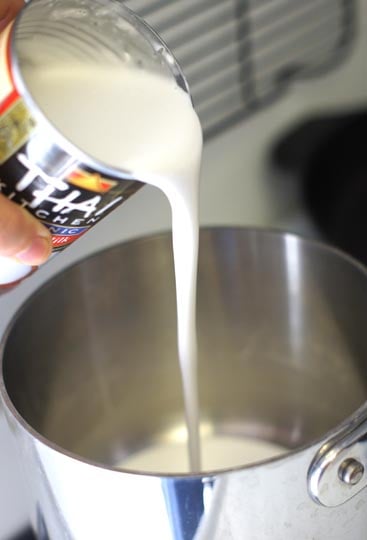
Traditional sweetened condensed milk is made by heating milk until most of the water is removed, then adding sugar, leaving you with a thick and sticky substance that tastes downright decadent in desserts and coffee drinks.
This homemade version is naturally dairy-free, and can be used in nearly any recipe calling for traditional sweetened condensed milk, adding a hint of rich, coconut flavor to the final result. Since you’re making it yourself, you get to control the sweetness! I prefer using honey as my natural sweetener, but agave nectar, pure maple syrup, coconut nectar, coconut sugar, or stevia should work just fine.
—
Homemade Sweetened Condensed Coconut Milk
makes about 12 ounces
inspired by this recipe
Ingredients:
1 14 oz. can full-fat coconut milk*
1/4 cup honey, or equivalent sweetener of choice
Directions:
Pour the coconut milk into a small saucepan, and heat over medium-high heat until boiling, about 5 minutes.
Watch this pot closely! Once the coconut milk starts to boil, it can bubble over quickly. Whisk regularly to prevent burning.
Reduce the heat, bringing the coconut milk to a simmer, then add the sweetener, whisking until it’s completely dissolved.
Allow to simmer for 30-45 minutes, or until the liquid is reduced by half.
*Note: I don’t recommend using low-fat or light coconut milk, since those versions are usually just coconut milk that’s diluted with water to lower the fat content. You’ll have to boil the coconut milk longer, and will have less condensed milk as a result– wasting your time and money. Use the full-fat stuff for best results!
Remove from the heat, and allow to cool completely before using in recipes.
This sweetened condensed coconut milk should last for at least a week when stored in a sealed container in the fridge.

How to Make Sweetened Condensed Coconut Milk
Ingredients
- 1 14 oz . can full-fat coconut milk
- 1/4 cup honey , or equivalent sweetener of choice
Instructions
- Pour the coconut milk into a small saucepan, and heat over medium-high heat until boiling, about 5 minutes. Watch this pot closely! Once the coconut milk starts to boil, it can bubble over quickly. Whisk regularly to prevent burning.
- Reduce the heat, bringing the coconut milk to a simmer, then add the sweetener, whisking until it's completely dissolved.
- Allow to simmer for 30-45 minutes, or until the liquid is reduced by half.
- Remove from the heat, and allow to cool completely before using in recipes. This sweetened condensed coconut milk should last for at least a week when stored in a sealed container in the fridge.
Notes
Nutrition
Calories per ounce: 91, Fat: 7g, Carbohydrates: 6g
I hope you’ll enjoy this non-dairy alternative as much I do! It’s a decadent addition to your weekend coffee, and makes a mean macaroon–> a recipe which I’ll be sharing later this week!
—
Reader Feedback: Do you ever use sweetened condensed milk? If so, what are your favorite recipes that call for it? I remember using it to make a classic fudge recipe years ago, and I tried it once in my coffee, which made it taste more like a dessert! It’s a little too labor-intensive for me to want to use it all that often, but it’s definitely a fun treat!
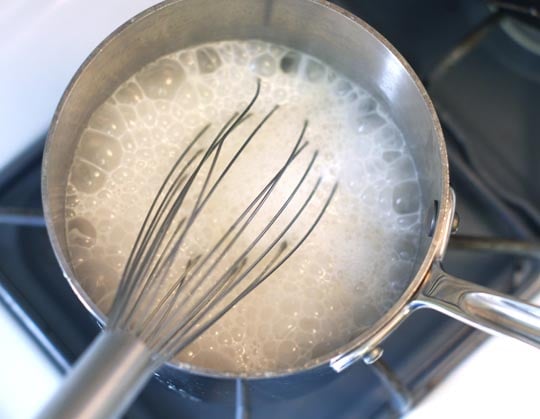
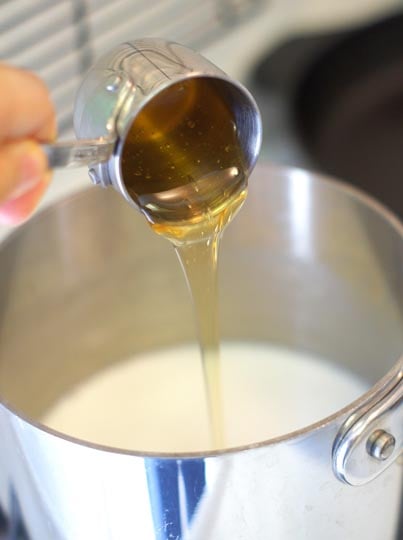
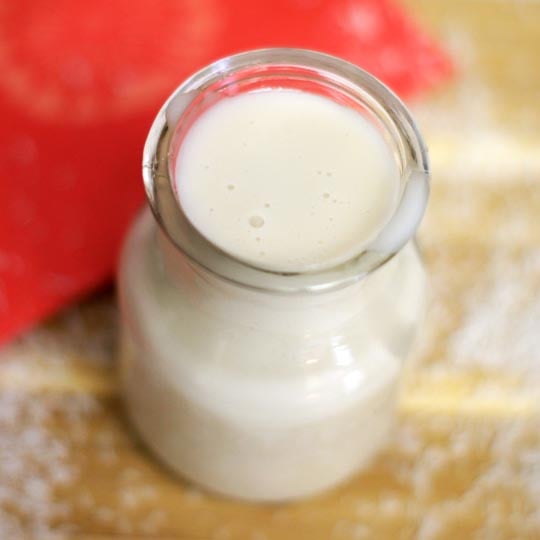

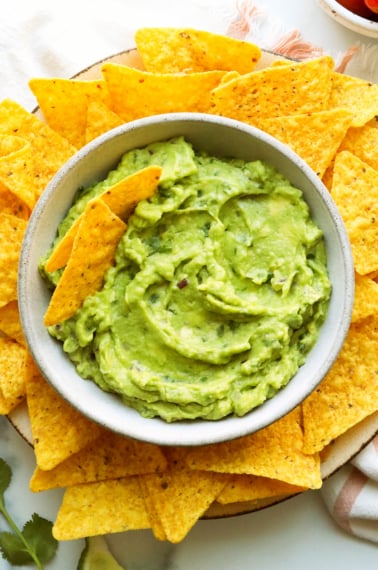
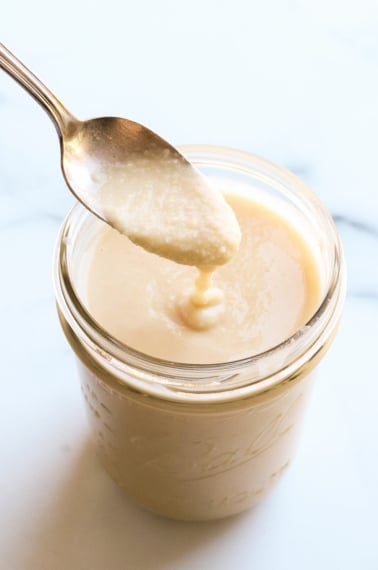
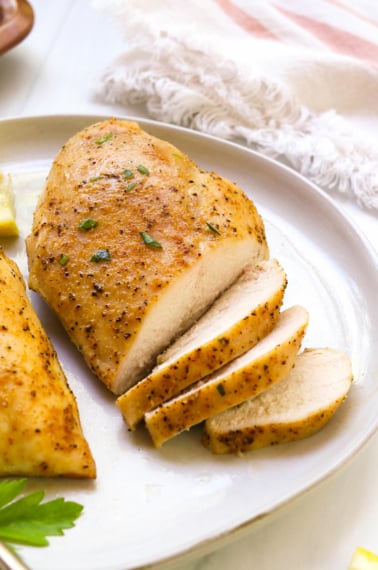
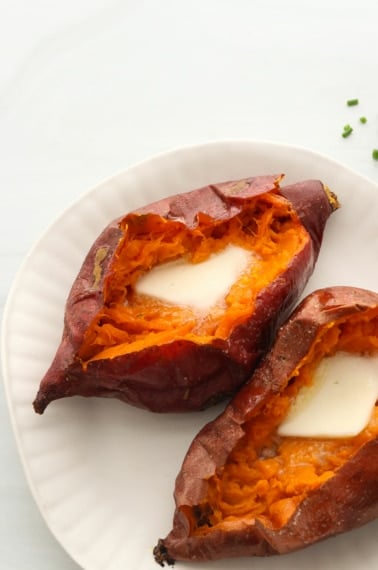






Thank you so much! I’ve been missing Vietnamese coffee.
I nearly forgot about Vietnamese coffee! I can’t wait to use this recipe for that. 🙂
Genius! I will definitely be trying this out!
Yes!!! I love this recipe, you’re a genius! There are a ton of Peruvian recipes that call for sweetened condensed milk and I avoid making all them.. but not now! Thanks!
Thanks for this recipe! I have a recipe I’d been wanting to try (German Chocolate Lava Cake), but didn’t want to use regular sweetened condensed milk in it.
I use a TON of raw almonds and I buy them in bulk from Costco. I am curious what your thoughts are on this article:
That started out like a great recipe post title, didn’t it? What – almonds and fuel? What’s wrong with this picture?
Everything.
Did you know that the “raw almonds” in the grocery store, health food store, or at Costco, are most certainly not raw almonds at all?
And did you know that they are most likely coated with a fuel additive. Jet engine fuel additive, to be specific. As in for racing cars and motorcycles.
I know. I couldn’t believe it either. Ick.
I first heard about this problem about 3 years ago when visiting another whole foods friend in a Chicago suburb.
My friend told me something about a chemical called PPO being sprayed on almonds. Like many new scary-sounding bits of natural information (like heavy metals, mercury in vaccines and fish, personal care products in water), I thought, “Oh yeah, sure.” Then I asked her to show me proof. Just in case she was right, you know .
Well, she produced a copy of an article outlining the problem. I got home, did my research, and found out that she was right.
Yes, Virginia, there just might be engine fuel on your almonds.
(Please note: This post used to be called “Almonds Coated with — Jet Fuel?” but I was mistaken by articles that listed PPO as being an additive in jet engines. What they meant wasn’t flying jet engines (though some model airplanes use this fuel), but instead engines in racing cars and motocycles and the like. Sorry for the confusion.)
Why is There Engine Fuel on My Almonds?
Basically, it’s another case of government regulation run amuck.
In 2001 and 2004 there were two outbreaks of salmonella poisoning that were traced back to almonds. 33 people became ill, but no one died. (Contrast that to the thousands of deaths caused by prescription drugs each year, yet the government continues to laud their safety over and above natural supplements and diet change.)
As a result, tons of almonds were recalled.
The Almond Board of California (ABC) panicked, started pasteurization of all almonds and asked the USDA to mandate it.
If you guessed that the governmental agency was all-too-thrilled to comply, you were right.
As a result, all almonds in the US are now pasteurized either by:
steam
freezing (this is rare) or
PPO (propylene oxide). According to Local Harvest, PPO is “a chemical so nasty that it was banned by both the National Hot Rod and American Motorcycle Racing Associations, where it had been used as a fuel before being deemed too dangerous.” (why is it not safe enough to be used as a racing fuel, but it’s OK to spray our almonds with this??
Just so you know, I called Costco and they verified that their almonds are sprayed with PPO. A Midwest natural foods supplier, Country Life Natural Foods, said that typically their almonds are steam pasteurized, but it is best to inquire whenever ordering from them (I have just heard from a reader that Country Life’s conventional almonds are treated with PPO .)
Why should we care if our almonds are pasteurized?
By the way, I am not a huge advocate of raw foods, but keeping your nuts raw gives them added nutritional value. You can read more about raw foods and how to make nuts and seeds more digestible in my post on How and Why to Soak Nuts and Seeds.
How to Get Really Raw (or at least “fuel-free”) Almonds
Unfortunately, there aren’t many options out there.
1. You can purchase “sproutable” pasteurized almonds. I haven’t done enough research into this to know if they are really more nutritionally beneficial than the steamed almonds. I have seen these in our local health food store and they are really pricey (about 10.99 per pound)
2. Purchase imported almonds from Spain. My most recent internet search for these yielded shocking prices of about $13.99 per pound
3. Find a raw almond buying group that buys almonds direct from almond farmers. There’s a little loophole in the pasteurization law that makes it an option to get really raw almonds as long as you buy them direct from a farmer. I have one of these out of my home and we buy loads of almonds every fall – just about this time. If you live in the W Michigan area, or don’t mind paying shipping to your location, you are welcome to join us. We’re ordering by 11/30. Contact me if you’re interested.
4. Become friends with an almond farmer .
5. Grow your own almonds (not an option here in Michigan .)
6. Contact the Almond Board. Maybe if enough of us do, they’ll stop pasteurizing almonds. One can only hope.
7. At the very least, contact your current almonds supplier to make sure that they aren’t spraying engine fuel on your almonds.
8. Read my review on Just Almonds, a seller of delicious almonds that are pasteurized with steam. You can get 10% off your order with CODE WNM as long as their ad is in my sidebar !
Can’t believe this? There has been so much news of the government over-reaching its reasonable bounds that it simply makes my head spin.
Hi Holly! Yes, I remember being HEARTBROKEN when this happened– I was eating a high-raw diet at the time, and raw almonds were a staple in my daily life! I think I bought-out my local Trader Joe’s supply of raw almond butter, because I thought it would cease to exist once the ban when into effect.
Unfortunately, it was even worse than I expected! I was so disappointed to see that manufacturers are still allowed to sell pasteurized almonds under a “raw” label, even when they aren’t raw! I could immediately taste the difference when they made the switch, and now I make an effort to buy truly raw Italian almonds online, or directly from almond farmers. For baking purposes, I’ll still use Trader Joe’s raw almond butter… though, now I’m tempted to contact them in regards to how they pasteurize their “raw” almonds! (Eeek.)
i had no idea about this!! ughhhhhhh 🙁
Yes, it’s awful news. 🙁 I have a few good sources for buying truly raw almonds– I’ll share them later this week!
Would you please share your sources for buying truly raw almonds. This is May, 2015. I just found your website. Thank you so much.
just to let you know- we all have jet fuel in us, not just the almonds. a study was done on lactating women to see if jet fuel was in the breast milk. yep. 100% of the participants had jet fuel in their breast milk. sorry little ones… look up. they are always overhead. including remote areas. they are still in a flight path. detoxing and clean lifestyle is the way to navigate our modern world 🙂
Who did this post originate from? I am in West Michigan, too, and would like to get in on the order.
Hi Holly,
I would like information on joining the almond group. (I would need to pay for shipping, as I am in Austin, Tx
zionlltl@yahoo.com
Thank you for the offer!
Wow thanks for the info. I try researching as much as possible but it gets overwhelming, especially with little ones running around. I knew some of this but not the full extent. Good thing my mom has an Almond and walnut orchard that are Raw. Also I’m excited to try this recipe. Coconut is the number one staple in my kitchen.
Hi Holly, I’d you’re still purchasing raw almonds in bulk, I’m interested in participating in your group. Please contact me at dragoness411 At gmail. Thanks.
Megan, this is awesome. I often want to make desserts for my two teenage boys that require sweetened condensed milk but am discouraged with the ingredients. I will ABSOLUTELY make this! Wonderful. Thanks for sharing! Have a great Sunday!
Would lite or low fat coconut milk work as well?
I haven’t tried it myself, but I imagine the low-fat version would thicken up, too. Please let us know if you try it! 🙂
Hi Megan, thanks for the link back. love your blog.
Now I know I boil coconut milk without it curdling. I’m amazed your milk still remains white after adding honey. Mine turns brown after I add coconut sugar.
I was actually surprised my milk didn’t get darker! I was afraid I did something wrong! But, it tasted delicious. 😉
When you cook honey with the milk does it not make it toxic. I read somewhere that honey should not be heated?
Raw unfiltered honey should never be heated because you kill the good bacteria.
Honey does not become toxic if cooked, it just loses some of the beneficial elements, like enzymes. So it becomes basically a sugar, but is no longer a living food.
My grandma used to make awesome pumpkin pie with canned pumpkin and condensed milk…I bet this would taste fantastic in that!
Hi! I had posted a question about your frequent use of coconut oil on another post earlier, but haven’t heard a response. I know it is hard to respond to everyone, but I thought I would ask again 🙂 I am looking to incorporate it into my diet since I have heard it is a healthy fat good for a flat belly. There are a lot of mixed opinions on this saturated fat though and I was requesting more information on why you believe it’s beneficial and how much and often you recommend including it in your diet. Plus, I would love to know your favorite uses. Thanks so much! I love how you enjoy your healthy eats. I am much the same way!
Hi Candice! I’ll try to do a more in-depth post on coconut oil in the near future, because I think it is a great topic, that deserves a comprehensive answer.
I’ve written briefly about why I include healthy fats in my diet here: https://detoxinista.com/2012/06/food-for-thought-fat-doesnt-make-you-fat/
So, hopefully that’ll help in the meantime! 🙂
Genius.